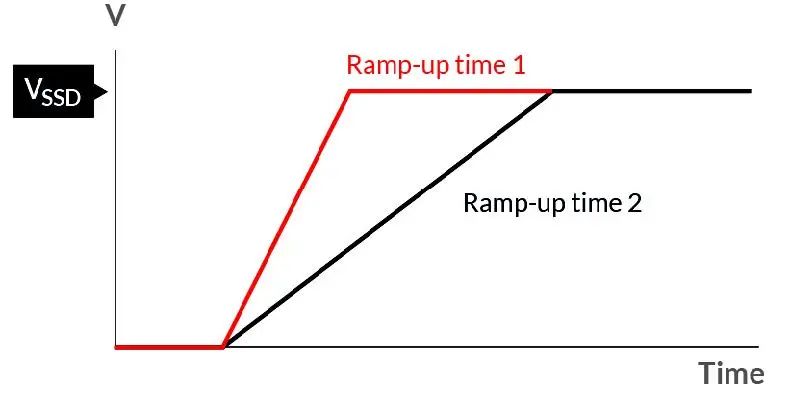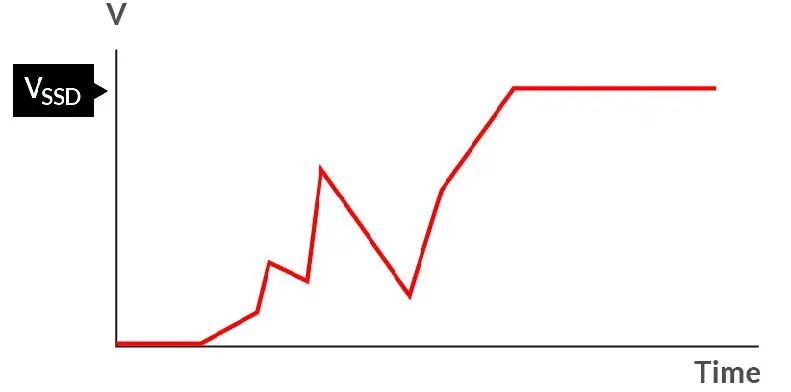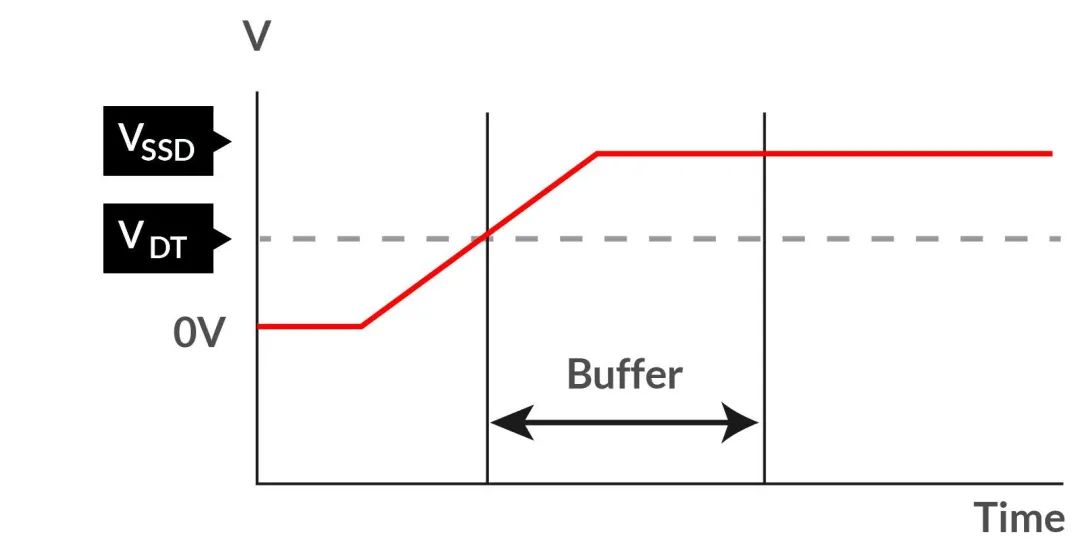How to ensure the stable performance of SSD when the voltage is unstable?
Source: InternetPublisher:containsmachine Keywords: SSD solid state drive Updated: 2025/02/25
Unstable power supply is a common challenge faced by equipment in remote and extreme environments, which can severely affect the operation of solid-state drives (SSDs). Unstable power supply during startup and shutdown can cause problems such as system crashes and system reboots.
Hardware-based prevention features protect SSDs from unstable voltage levels. Extending the ramp-up time during boot ensures that the voltage is stable before allowing the SSD to turn on. By adjusting the hardware to only allow booting after the voltage has dropped after a system shutdown or during a fast restart, residual voltage can be prevented from causing problems.
By combining these two hardware features, the SSD is protected during both startup and shutdown.
Unstable power supply and sudden power outages have always been challenges faced by storage devices
A sudden drop in power can cause data corruption and, in the worst case, cause the entire device to fail. Therefore, most SSDs used for critical applications have an emergency function that saves data and ensures that there are no problems when restarting after a sudden power outage.
These technologies are primarily used to ensure data integrity after an event. However, there are other power factors that can affect the integrity of SSD data. Some applications run under unstable power conditions. During startup and use, the voltage may fluctuate, which in turn can interfere with the operation of the SSD and also damage the device. Another significant risk is residual voltage after shutdown, which can further cause problems when restarting the system.
However, there are some preventative measures that can help mitigate these issues. Protection measures can be implemented by optimizing the hardware structure so that the SSD can prevent data corruption and sudden reboot issues. This article will further explain the risks of power loss and power instability, and more importantly, how to avoid these risks.
Power instability is mainly manifested in systems with insufficient and unstable power supply, such as in-vehicle computers, remote installations, and equipment used in underdeveloped areas with low power grid reliability.
However, even in areas with a stable power supply, power loss can still occur under certain unforeseen circumstances, such as construction errors or lightning strikes that temporarily disable the grid. Therefore, even if the risk is low, the integrity of mission-critical data still needs to be safeguarded.
Challenge: Unstable startup
There are two risks associated with system startup: unpredictable startup time and unstable power supply.
The SSD will only start up after exceeding a preset threshold voltage. This can cause problems when the ramp-up time is too long, as the threshold voltage is not high enough for the SSD. The ramp-up time depends on the local power supply and therefore varies from place to place (see Figure 1), making it difficult for manufacturers to develop a solution that satisfies all situations.

Figure 1: Two different examples of boot times for different devices
During the ramp-up process, the voltage may fluctuate (see Figure 2). This may trigger the SSD to boot up, but the voltage may continue to fluctuate before finally stabilizing. As with the slow boot time described above, this situation may cause problems with the device booting up and may result in data corruption and SSD damage.

Figure 2: Voltage fluctuation during SSD ramp-up
Residual voltage
After a successful shutdown, the voltage level should be close to or at 0V. However, a poor power supply may leave residual voltage after shutdown. This may cause problems on restart.
Rising buffer
To avoid any issues at boot time, the SSD creates a buffer after a preset voltage threshold is reached. When the threshold is reached, the SSD will adjust the device boot to ensure a stable voltage level is reached. Therefore, any time when the power is unstable or slowly rising will be safely captured within the buffer. This feature will run at any system boot, so different conditions will also be taken into account.

Figure 3: After reaching the threshold voltage (VDT), the SSD adds a buffer to ensure that a stable voltage (VSSD) is reached before starting.
No residual voltage disturbance during startup
During SSD startup, residual voltage can cause problems. If there is any residual voltage after shutdown, the SSD will force it down to near 0V and then allow the system to restart. This protection measure always ensures a safe boot every time, further enhancing the preventive power protection function of the SSD.
Unstable power is a huge risk factor for any device using flash memory. Safe shutdown algorithms have been around for a long time, but not many people knew what precautions could be taken to ensure safer power-up and power-down, as well as more stable performance.
Efficient power protection measures can protect any SSD from unstable and fluctuating voltages, thereby improving data integrity and system operating efficiency.
- Methods for Suppressing Conducted Radiation in the FM Band
- TPS274C65 helps reduce downtime and increase productivity in 24 VDC power distribution plants
- Schematic diagram of car cigarette lighter to USB power port
- Brief Analysis of the Working Principle of AC Voltage Stabilizer Circuit
- Basic connection circuit of signal and power supply composed of ISOll3
- Op amp power supply decoupling bypass measures
- The constant current source composed of two transistors can drive high power
- How to use SBR to improve power conversion efficiency
- Voltage-current converter constructed with XTR110
- 3~15V 10A adjustable voltage regulated power supply
- Power circuit a composed of intelligent thyristor modules
- Dual adjustable power circuit
- 2-phase CPU power supply circuit using HIP6302 and HIP6602 chips
- Diamond differential input power amplifier power circuit
- Power circuit for home appliance repair
- Practical neon light power circuit
- Common power circuits and applications 09
- 25Hz ring current power supply circuit
- Nine-speed adjustable DC power circuit
- Maintenance and experiment of multi-purpose power circuits







 京公网安备 11010802033920号
京公网安备 11010802033920号